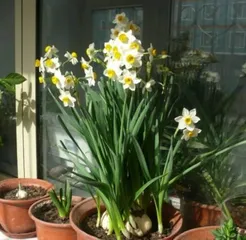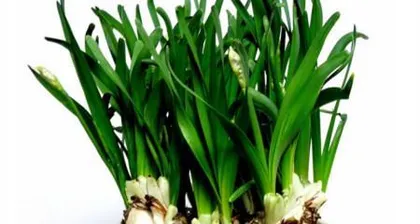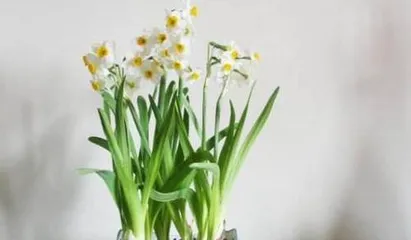Narcissus, also known as daffodil, is a very beautiful flower. Not only are the flowers brightly colored, but they also have high ornamental value. However, if not cared for properly, it is easy for them to die. This article will focus on the cultivation methods and precautions for narcissus, helping flower lovers successfully cultivate this beautiful plant.

I. Precautions for Selecting Narcissus Bulbs
When buying narcissus bulbs, choose varieties that are plump, have eyes, and are free from pests and diseases.
II. How to Plant Narcissus Bulbs in Soil
When planting narcissus bulbs in soil, first wash the bulbs, then select a pot or box of appropriate size, lay a layer of fine or coarse sand, and then add soil.

III. How to Water
When watering, do not let water come into direct contact with the bulb. First, pour the water from the pot onto the soil surface, allowing the soil to absorb the water before it slowly seeps down to the bulb.
IV. How to Control Temperature
Narcissus prefers a cooler environment, but not too cold. The most suitable temperature is between 12-20°C. If the temperature is too high, it will cause the leaves to turn yellow and fall; if it is too low, it will prolong the flowering period.
V. How to Control Light
Narcissus likes plenty of sunlight, but should not be exposed to direct scorching sun. The most suitable light intensity is between 10,000-20,000 lux. If it is too strong or too weak, it will shorten the flowering period or cause the plant to wilt.

VI. How to Control Humidity
Narcissus is highly drought-tolerant and should not be sprayed or watered excessively, otherwise it is easy to cause mold or rot.
VII. How to Fertilize
The growing period of narcissus is relatively short, and generally no fertilization is needed. If fertilization is required, a compound fertilizer containing nitrogen, phosphorus, and potassium can be used.
VIII. How to Prune
After narcissus flowers, the flower stalks and leaves should be pruned in a timely manner. This allows the narcissus to better absorb nutrients and prepare for the next flowering.
IX. How to Prevent and Control Pests and Diseases
Common pests and diseases for narcissus include powdery mildew, black spot, aphids, etc. Methods for preventing and controlling pests and diseases include timely removal of fallen leaves, ventilation, and spraying insecticides.
X. How to Store Narcissus Bulbs
After harvesting, narcissus bulbs need to be stored properly. They should be dried in the sun after harvesting and stored in a ventilated and dry place, away from direct sunlight and moisture.
XI. How to Propagate Narcissus
Propagation methods for narcissus include bulb division and bulbil propagation. Among them, bulb division is the most common method.
XII. How to Handle Narcissus During Transportation
When moving narcissus, handle it with care to avoid damaging the stems and flowers. You can cover the pot with protective cardboard or foam board to reduce vibration during transportation.
XIII. How to Transplant Narcissus
When transplanting narcissus, pay attention to preserving the complete root system and avoid damaging the roots. After transplanting, water it in a timely manner and avoid direct sunlight.
XIV. How to Manage the Flowering Period of Narcissus
The flowering period of narcissus is relatively short, generally 10-15 days. After the flowering period, the flower stalks and leaves should be pruned in a timely manner to prepare for the next flowering.
XV.
The above is a detailed introduction to the cultivation methods and precautions for narcissus. To cultivate beautiful narcissus, you need to pay attention to details such as temperature, light, and humidity. I hope this article is helpful to you, and I wish you success in growing beautiful narcissus.